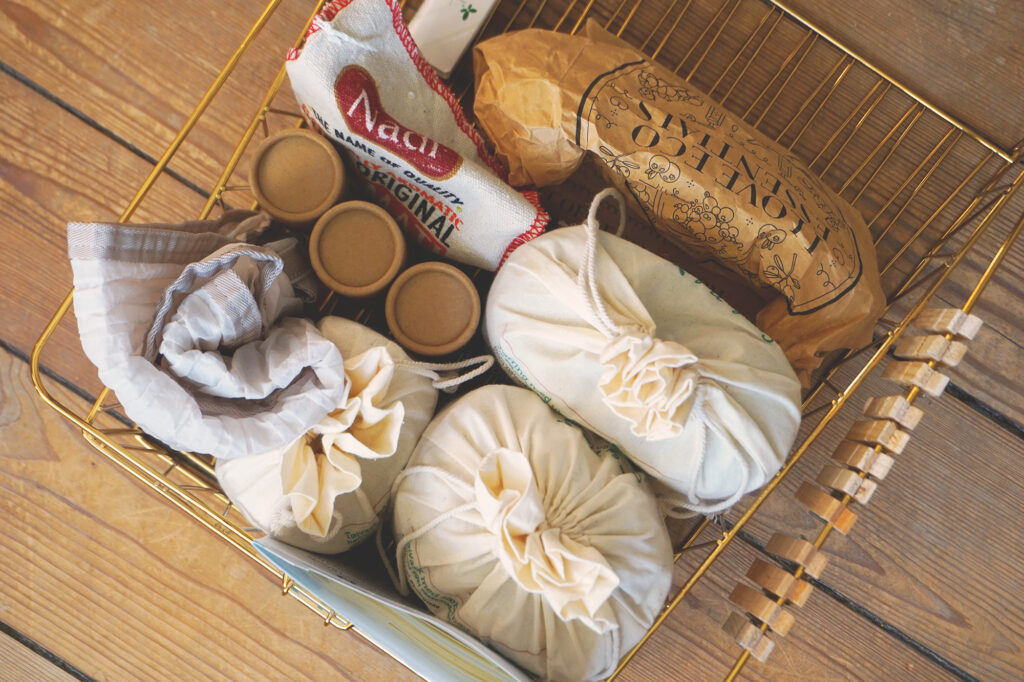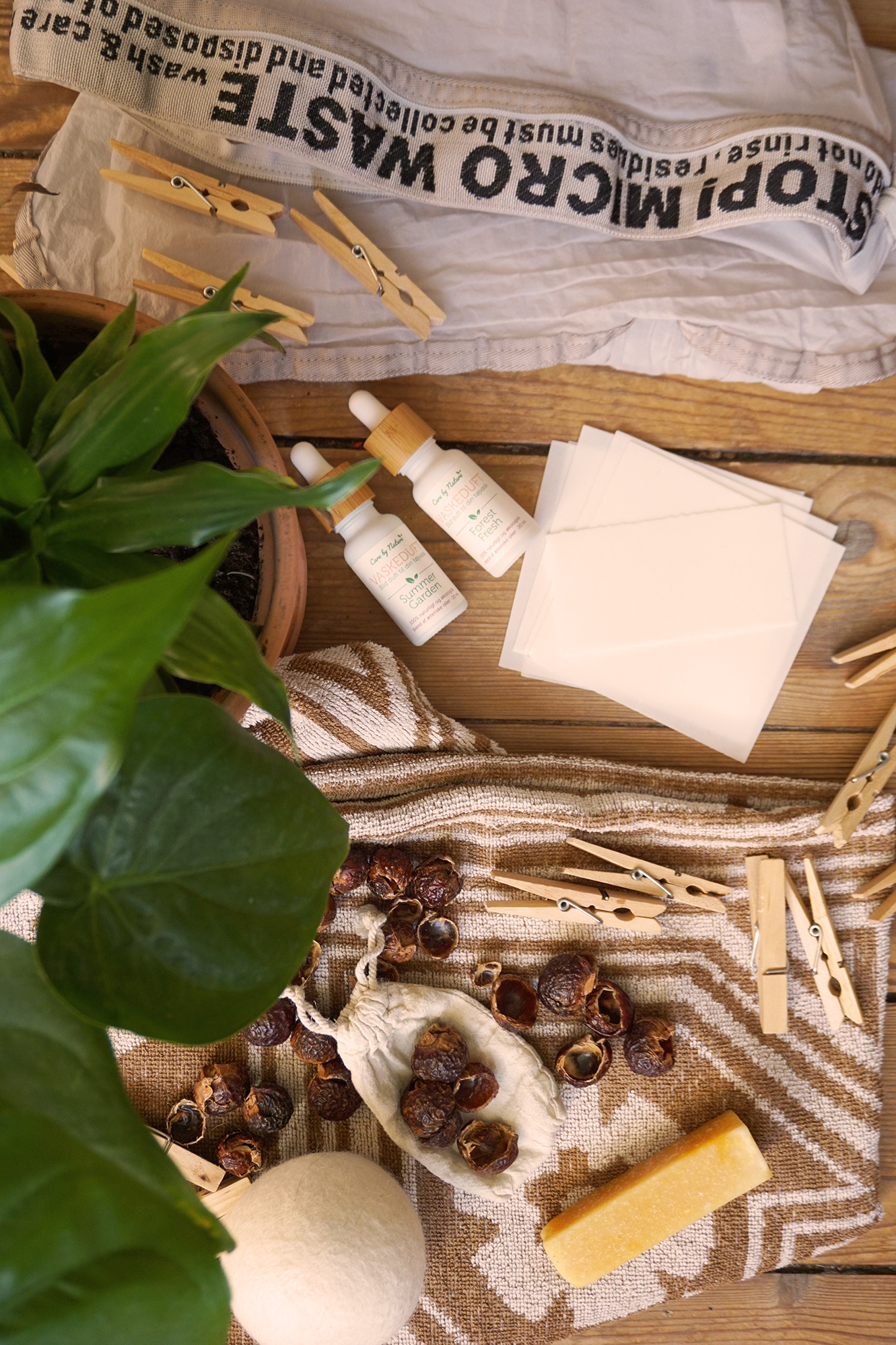Hello everybody! I have shown my laundry routine quite a few times in my cleaning videos, which will all be linked at the end of this post. But I realized that it would probably be a good idea to gather all the info, all the links, and all the recommendations, into one post. A such, I hope it will be easier to navigate the tips and hacks and find exactly what you are looking for.
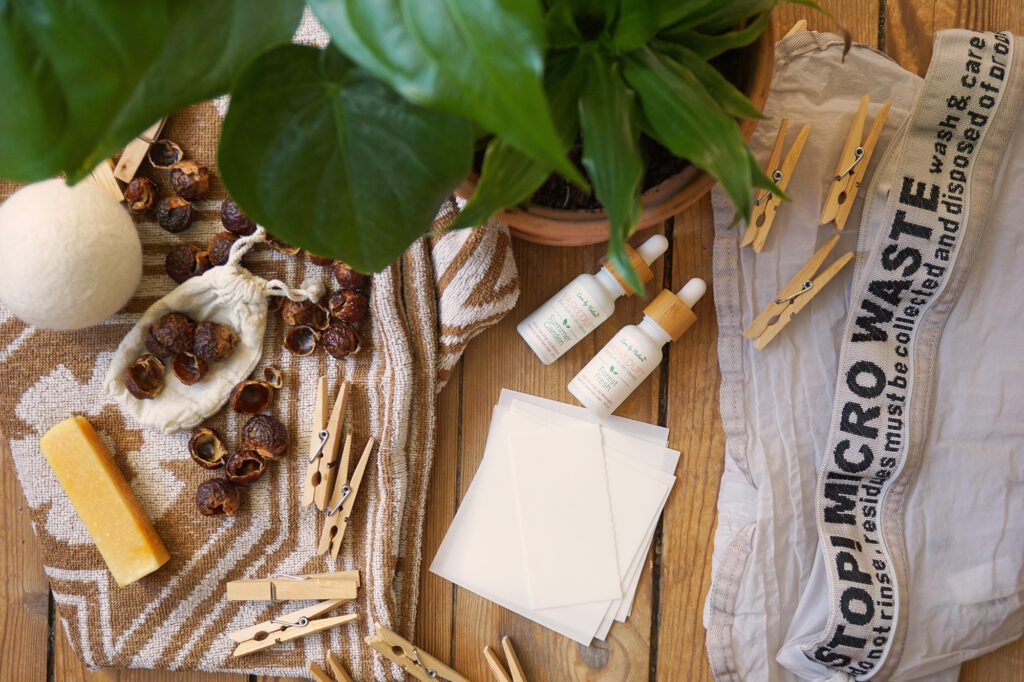
Low waste laundry tips:
- Air dry your clothes rather than using a dryer, this can extend the life of your clothes, and it will reduce the washing impact of your laundry by up to 50%.
- Only wash what is dirty, spot wash and hand wash smaller items, and wait with the big wash until you can wash a full load.
- To remove slight odors leave your clothes in the freezer overnight.
- Refrain from throwing your clothes into a corner of your bedroom when you’re done wearing them, especially activewear, this will increase odors and risk of molds. Instead, stretch it out or hang it outside to air dry.
- Stop using fabric softeners, they contain harmful toxins that increase the risk of developing asthma, cancer, and allergies, and the harmful ingredients bio-accumulate in our water systems causing harm to the environment.
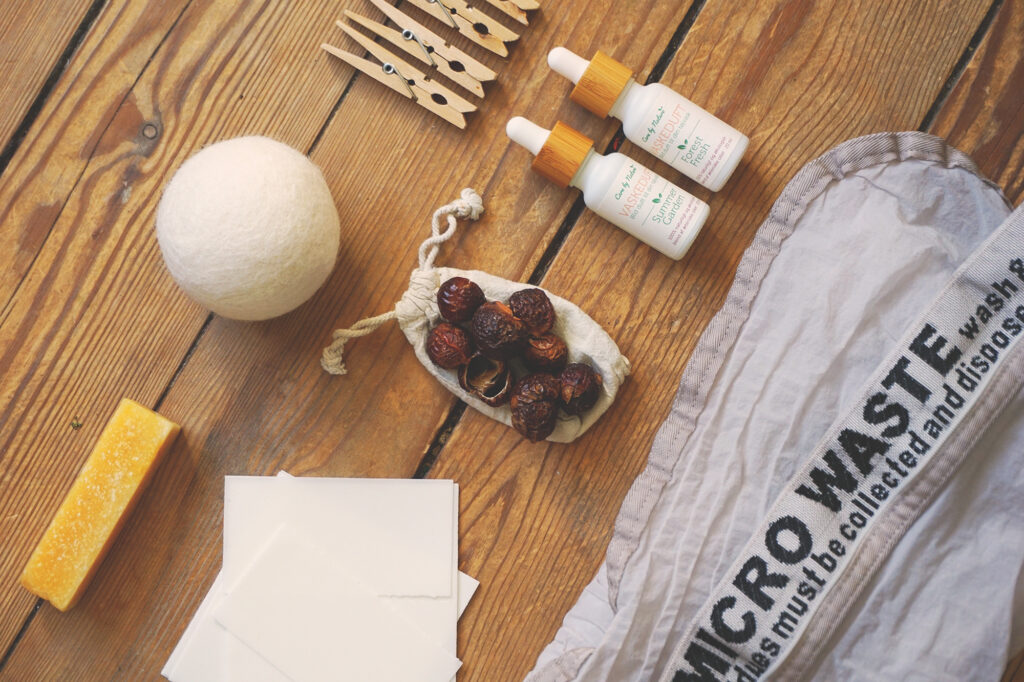
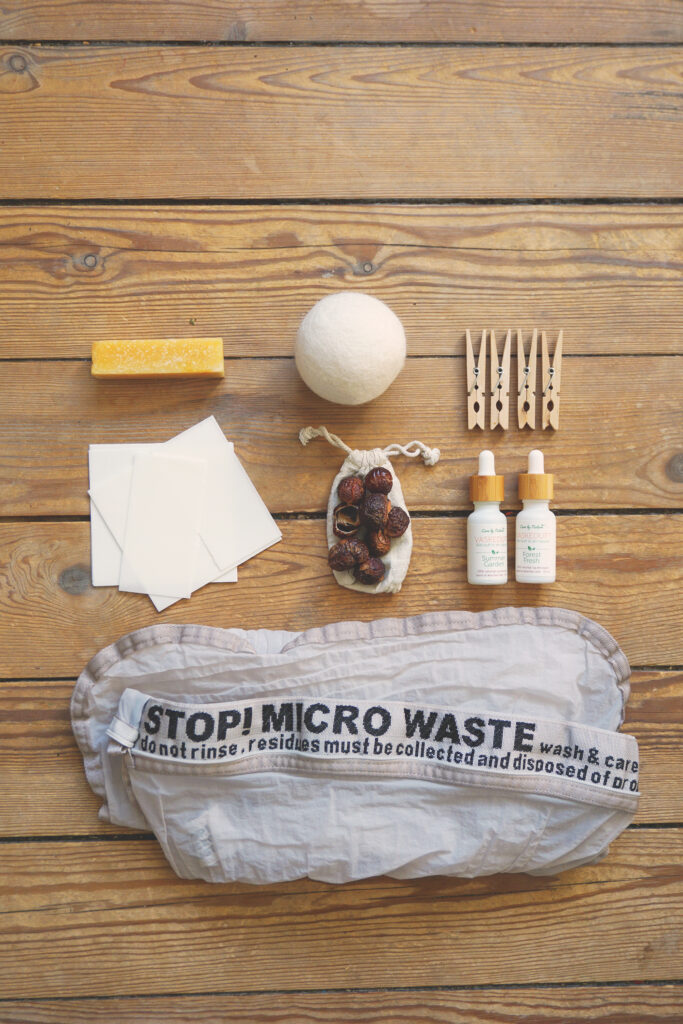
Guppyfriend: Washing Bag protects synthetic garments in the wash and helps stop microfibers from entering our oceans and rivers during the washing process. How to: put your synthetic clothes in the washing bag, seal it and throw the bag in the wash. When I do my laundry I put my natural fibers loosely, and my synthetics in the bag, then I wash them together. What to be cautious of: the microfiltration bag is a great addition to your laundry routine, in terms of attempting to combat microplastic from synthetic fibers, because as much as 700,000 microfibers can be released from just one laundry load. However, the bag is not a perfect solution and there is no way for it to catch everything, so have in mind that this is an option that can slightly improve the problem. Also, the microfibers gathered by the bag should simply be tossed in the bin, not ideal, but definitely better than having it flushed out into our water systems.
Find the Guppyfriend here (affiliate link)
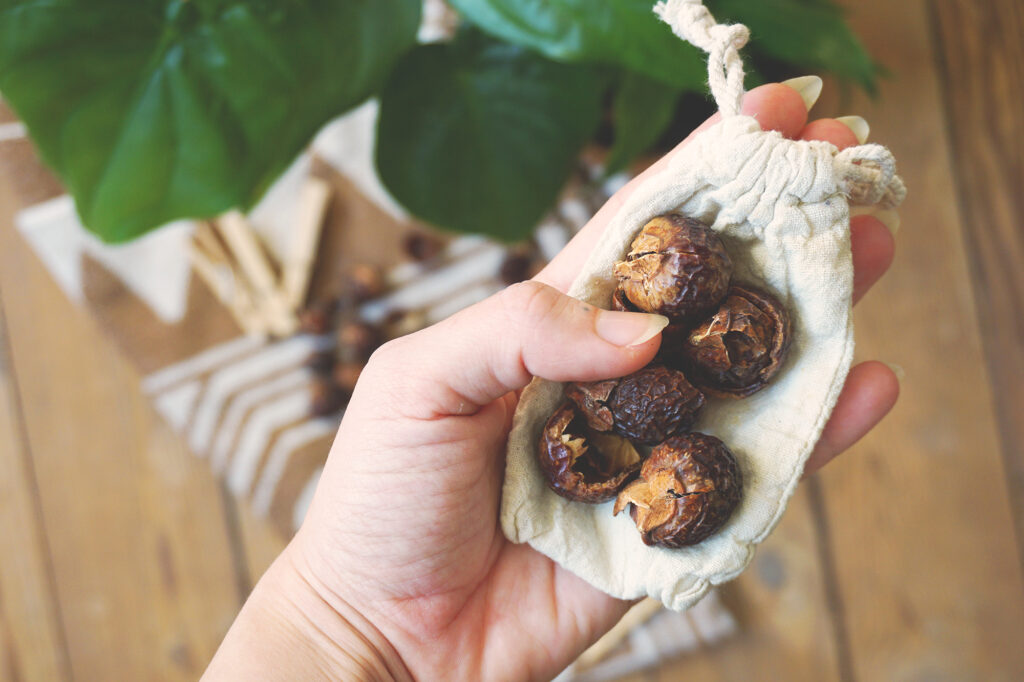
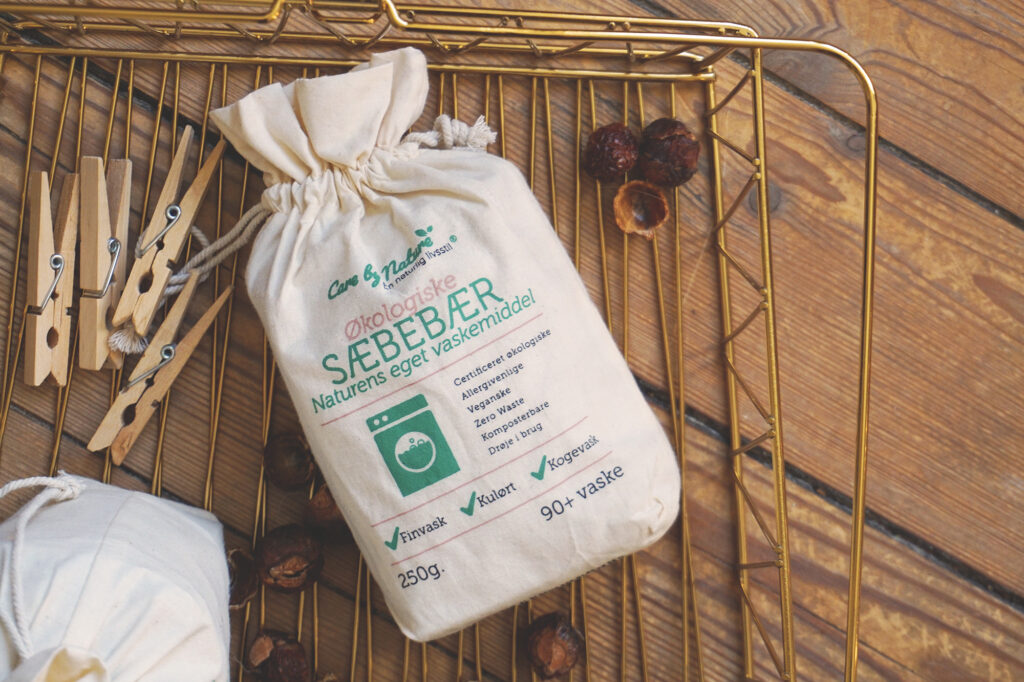
Soap nuts: also known as soapberries, washing nuts, soap nut shells, and wash nuts, are basically the dried-out shells from the soapberry. These berries are the fruit from the Sapindus mukorossi tree that grows in India and Nepal. Soap nuts release saponin when coming into contact with water between 30-60oC (86-140oF) and will last an average of 4-5 washes How to: put 4-5 soap nuts in the small tote bag, these usually come with the soap nuts, then tie a knot to make sure they stay in the bag during the wash. Add the tote to the laundry load and wash as normal. What to be cautious of one of the things I’ve heard about many times when it comes to soap nuts is that their increased popularity in Western countries has made them inaccessible to the people to typically used them in India and Nepal. However, I haven’t seen any credible sources confirm this, but nonetheless, this industry is a very unregulated area and there are practically no certification systems in place to make sure the production is up to par. Therefore I would urge you to choose a company that is not only sustainable but also socially responsible. For this, I can definitely recommend Care By Nature, where I got my soap nuts.
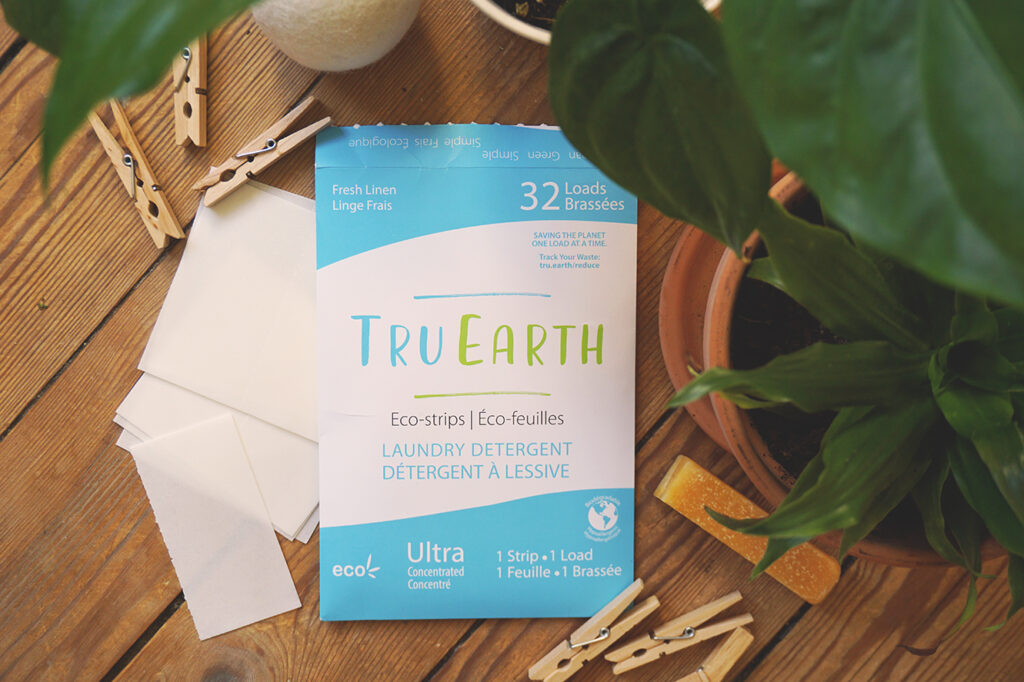
Detergent sheets: Tru Earth Eco-Strips are an alternative to liquid or pod detergent. Out of the box, they look and feel like thin foam sheets. They’re made up of polyvinyl alcohol (PVA), so the biodegradable strips completely dissolve in water. They come in very minimal packaging. How to: The sheets are designed to be ribbed in thrids and used individually. Add the sheet to the same compartment as you would add liquid soap and wash as normal. Out of all the low waste laundry products I have tried, I think I have been the most satisfied with this one honestly. What to be cautious of: Personally I have not had problems with delivery from the company’s own website, but I have had friends that are still waiting for their sheet which is frustrating because the products are legit amazing. So if you can I would suggest buying from other shops who carry them – I ordered my recent batch from this danish website, here is a UK site
Natural laundry powder: You can find this in bulk, or buy the powder in paper bags, it works, in the same way, are detergent normally does, but it is produced much more sustainable and contains no dyes, fillers, perfumes, phosphates, optical brighteners, enzymes, and petroleum-based ingredients
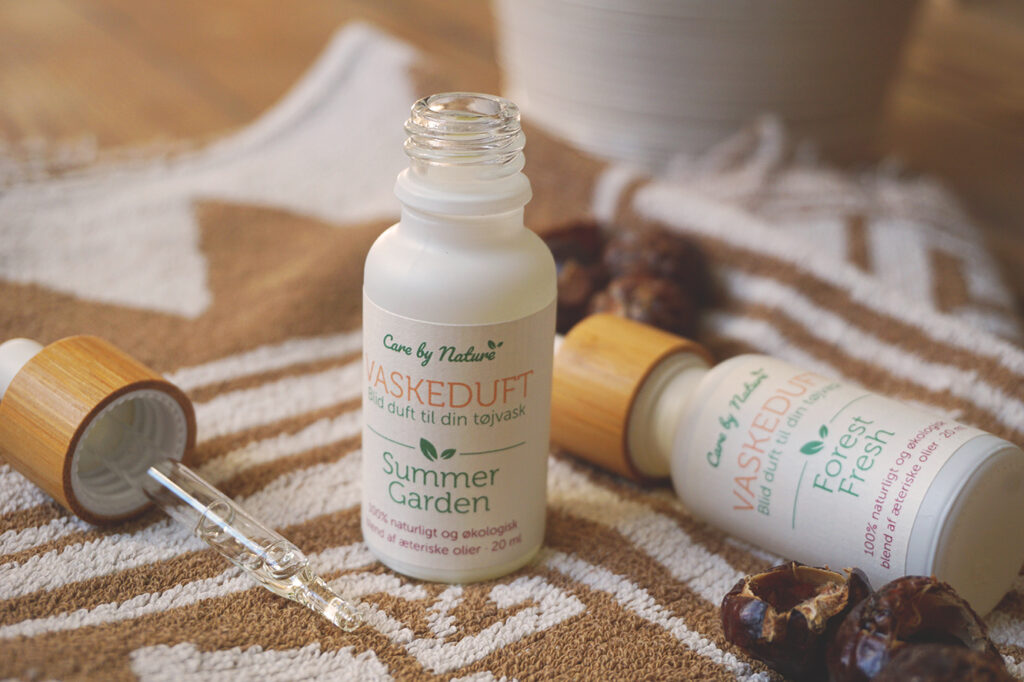
Essential oil: can be a great alternative to scented fabric softeners, in case you like your laundry to be scented. Let it be known, that this is not necessary, however, I do understand the preference. I just also think it is important to recognize that most consumers are so accounted to scented products that we associate no scent with something being less clean, and scented products are cleaner, when in fact it has to be the other way around. Do what you personally want, but this is good to remember. If you want a greener option you can use essential oil laundry scents as an alternative to the scented fabric softeners. How to: drop a couple of drops of essential oil in with your clothes before starting the wash. What to be cautious of: essential oils do not come without a footprint of course. It takes 116 plants to make one pound of lavender essential oil. Most essential oils are sold in ½ ounce (15ml) bottles.
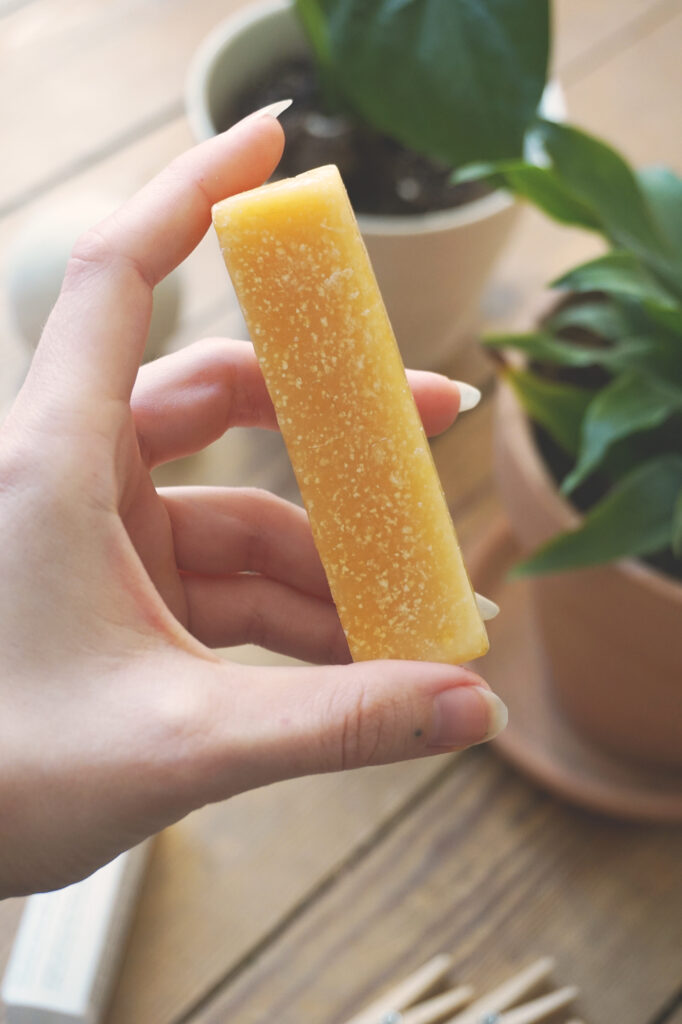
Solid stain remover: A solid piece of soap that is especially good at removing stains. Sometimes you don’t need to throw the clothes in the wash because of a stain, it saves resources to simply rinse the stain out by hand. Mine is from this Danish website.
Eco-friendly softeners: Dropps makes a safe, natural fabric softener that comes in completely recyclable and compostable packaging, so you can avoid both the health and environmental impacts of traditional fabric softeners. You can also add ½ cup of white vinegar to the washing machine right before the final rinse cycle. You can add it to the built-in fabric softener dispenser (if your machine has one). Another option is adding 2 cups of vinegar to 2 cups of water and 2 tablespoons of vegetable glycerin for a homemade fabric softener.
